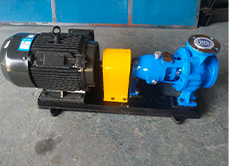Corsican
- Afrikaans
- Albanian
- Amharic
- Arabic
- Armenian
- Azerbaijani
- Basque
- Belarusian
- Bengali
- Bosnian
- Bulgarian
- Catalan
- Cebuano
- Corsican
- Croatian
- Czech
- Danish
- Dutch
- English
- Esperanto
- Estonian
- Finnish
- French
- Frisian
- Galician
- Georgian
- German
- Greek
- Gujarati
- Haitian Creole
- hausa
- hawaiian
- Hebrew
- Hindi
- Miao
- Hungarian
- Icelandic
- igbo
- Indonesian
- irish
- Italian
- Japanese
- Javanese
- Kannada
- kazakh
- Khmer
- Rwandese
- Korean
- Kurdish
- Kyrgyz
- Lao
- Latin
- Latvian
- Lithuanian
- Luxembourgish
- Macedonian
- Malgashi
- Malay
- Malayalam
- Maltese
- Maori
- Marathi
- Mongolian
- Myanmar
- Nepali
- Norwegian
- Norwegian
- Occitan
- Pashto
- Persian
- Polish
- Portuguese
- Punjabi
- Romanian
- Russian
- Samoan
- Scottish Gaelic
- Serbian
- Sesotho
- Shona
- Sindhi
- Sinhala
- Slovak
- Slovenian
- Somali
- Spanish
- Sundanese
- Swahili
- Swedish
- Tagalog
- Tajik
- Tamil
- Tatar
- Telugu
- Thai
- Turkish
- Turkmen
- Ukrainian
- Urdu
- Uighur
- Uzbek
- Vietnamese
- Welsh
- Bantu
- Yiddish
- Yoruba
- Zulu
Telephone: +86 13120555503
Email: frank@cypump.com
Sep . 01, 2024 18:06 Back to list
Comprehensive Guide to Pump Septic Systems
Understanding the Pump Septic System A Comprehensive Guide
A pump septic system is an essential component of wastewater treatment in areas where conventional soil absorption systems are not feasible. These systems are designed to handle effluent from residential or commercial properties, particularly in locations with high water tables or challenging terrain. Understanding the operation, components, and maintenance of a pump septic system is crucial for homeowners and property managers to ensure efficient wastewater management and to avoid costly repairs.
How a Pump Septic System Works
At its core, a pump septic system functions similarly to a traditional septic system. It consists of a septic tank, which is responsible for holding and partially treating the wastewater. Solids settle at the bottom of the tank, forming sludge, while lighter materials, such as grease and oil, float to the top as scum. The liquid effluent in the middle layer is what is treated and eventually discharged into the drain field or leach field.
However, unlike conventional systems that rely on gravity to move effluent from the septic tank to the drain field, pump septic systems incorporate a pump to facilitate the movement of wastewater
. This is particularly beneficial in situations where the drain field is located at a higher elevation than the septic tank or in rocky or clay-heavy soils where gravity flow might be insufficient.Key Components of a Pump Septic System
pump septic system

1. Septic Tank The first stage of the system, where solids are separated from liquids. 2. Pump Chamber This chamber contains the pump that actively pushes the effluent to the drain field, ensuring efficient distribution. 3. Drain Field Comprising a series of trenches or beds filled with gravel and perforated pipes, the drain field allows the treated effluent to percolate into the surrounding soil, where further filtration and treatment occur. 4. Control Panel A vital component that manages the pump's operations, ensuring it runs only when necessary and monitoring for any malfunctions.
Maintenance Considerations
To ensure the long-term efficiency of a pump septic system, regular maintenance is paramount. Homeowners are advised to follow these key practices
- Regular Inspections Schedule professional inspections at least once a year to check the condition of the septic tank and pump. - Pumping the Septic Tank Depending on household size and usage, the septic tank should be pumped out every 3 to 5 years to remove accumulated sludge and scum. - Monitor the Pump Keep an eye on the control panel for any warning lights or alarms indicating pump failure. Early detection can prevent system backups and costly repairs. - Water Usage Be mindful of water usage patterns to avoid overwhelming the system. Spread out laundry loads and fix leaks promptly.
Conclusion
A pump septic system is a practical and efficient solution for wastewater management in challenging terrains. By understanding how these systems function and implementing proper maintenance practices, homeowners can ensure their pump septic systems operate effectively, safeguard the environment, and protect their investments. With the right care, these systems can provide reliable service for many years, making them a valuable asset to any property.
-
Custom Drilling Mud and Slurry Pump Supplier - High Efficiency, Tailored Solutions
NewsJun.10,2025
-
Supply Vertical Submersible Sewage Pump High-Efficiency WQ/QW Pumps Supplier
NewsJun.10,2025
-
Premium Sewage Ejection System & Pumps Efficient Waste Removal
NewsJun.09,2025
-
Premium Wholesale Slurry Pump Impellers Durable & Efficient Slurry Handling
NewsJun.09,2025
-
Top Sewage Pump Companies Durable Industrial Solutions for Efficiency
NewsJun.09,2025
-
Heavy Duty Slurry Pumps - OEM High Performance & Bulk Wholesale
NewsJun.09,2025










